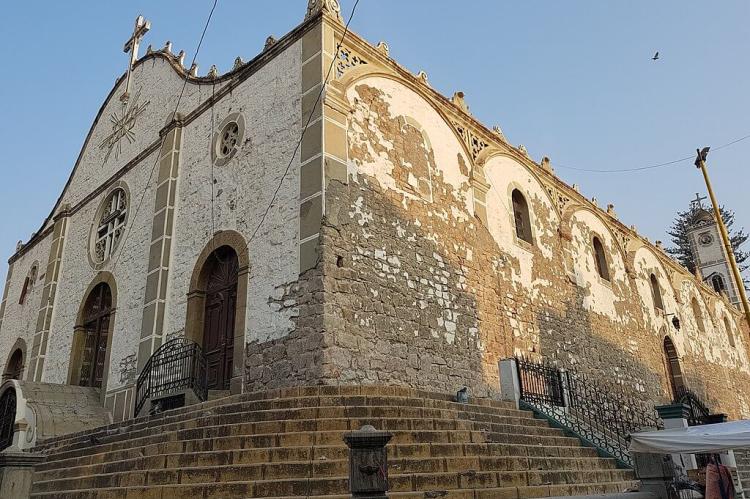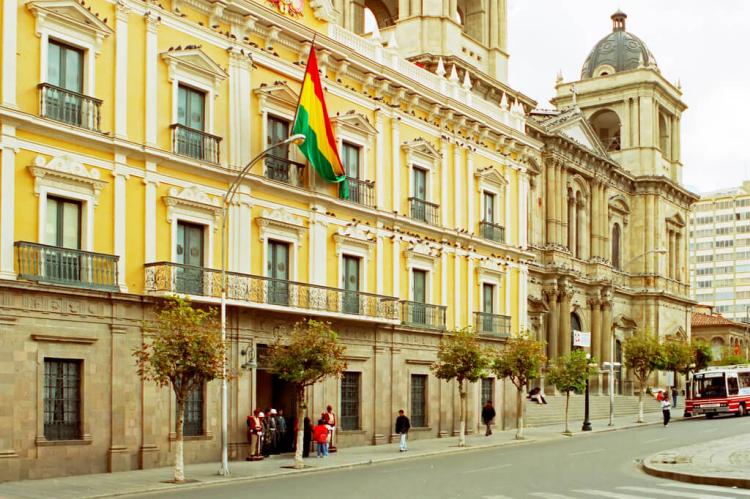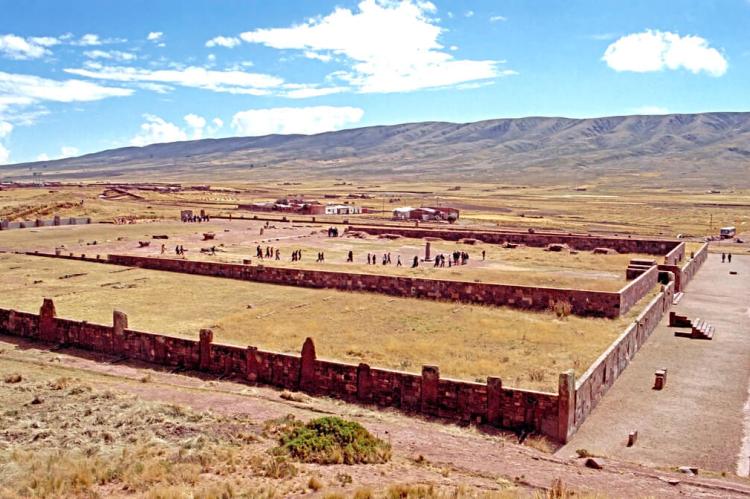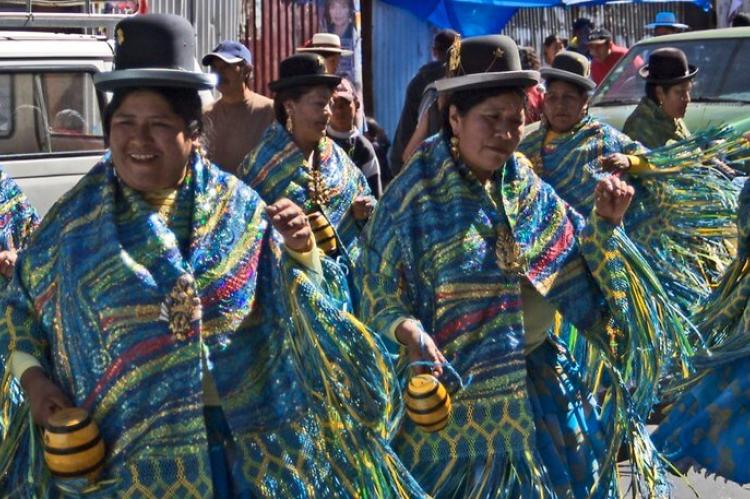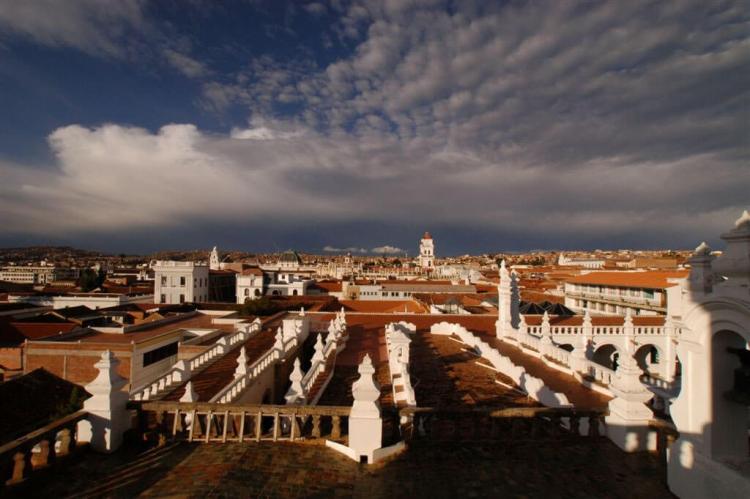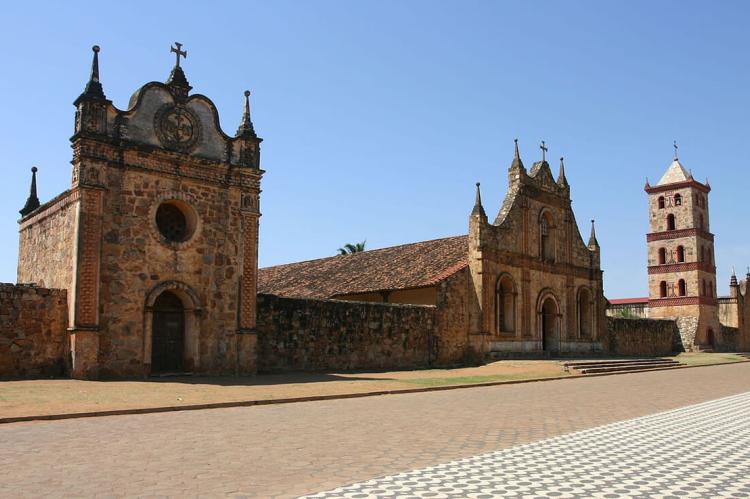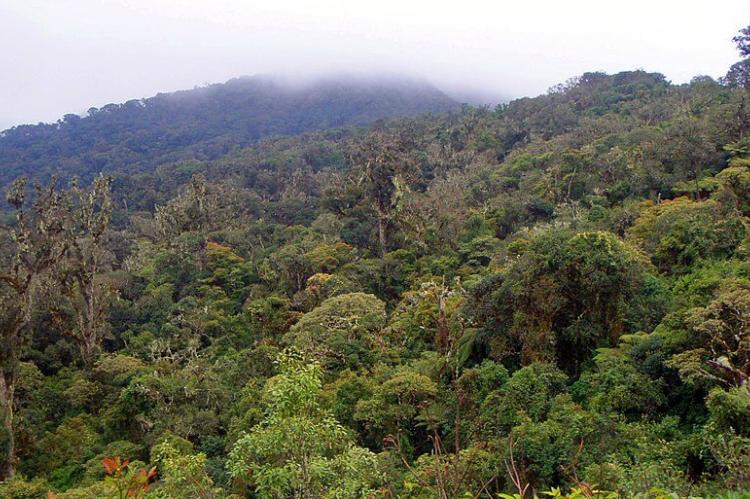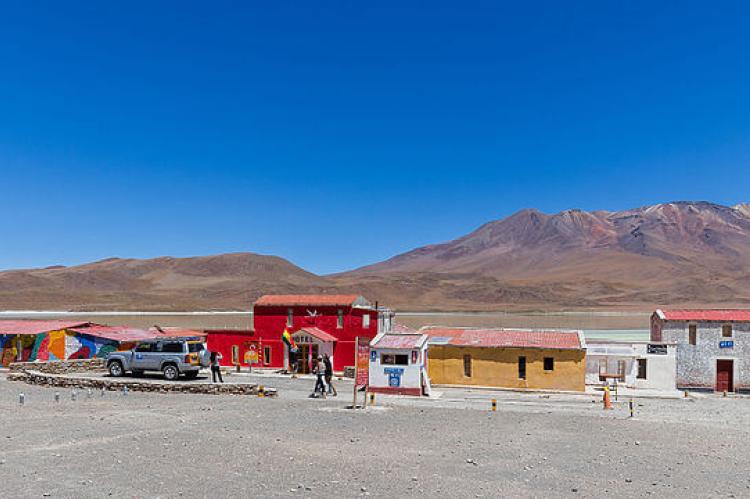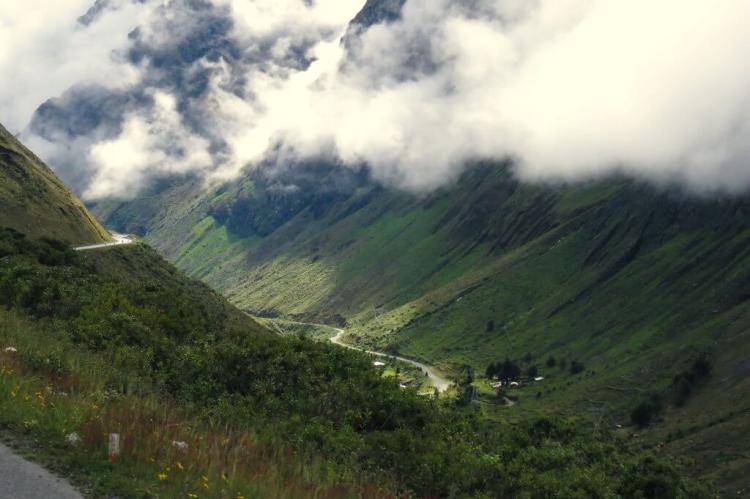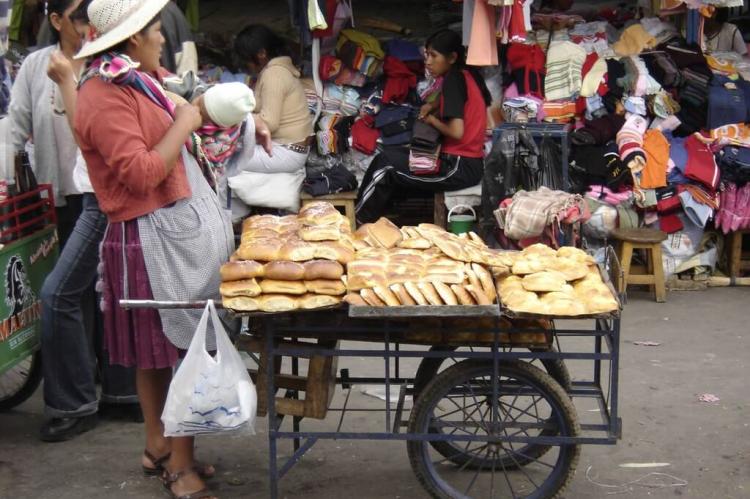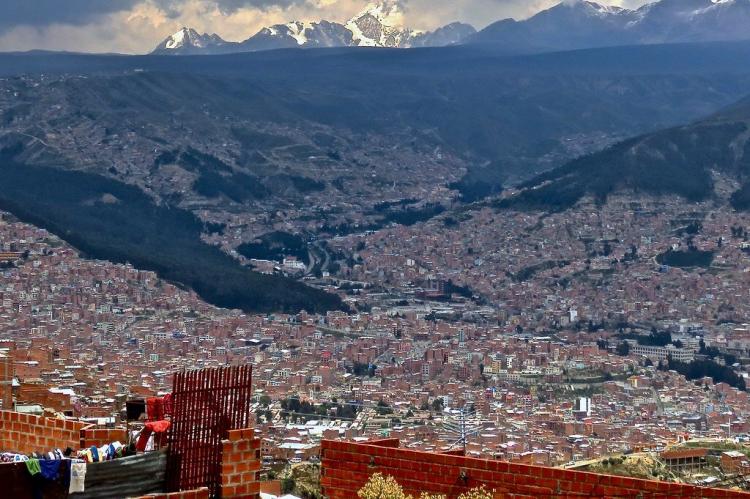Bolivia: Cultural Landscape
Bolivia's cultural landscape is a tapestry of traditions, languages, customs, and artistic expressions embodying multiculturalism. The coexistence and blending of indigenous heritage with colonial and contemporary influences make Bolivia's cultural landscape captivating and unique.
The Cultural Landscape of Bolivia
The culture of Bolivia is incredibly diverse and rich, reflecting the country's multicultural heritage and blending indigenous, European, and African influences. The cultural landscape of Bolivia is shaped by its history, geography, and the traditions of its various ethnic groups.
-
Indigenous Cultures: Bolivia has a significant indigenous population, including various ethnic groups such as the Aymara, Quechua, Guarani, and many others. These indigenous cultures have preserved their traditions, languages, and spiritual beliefs, contributing to Bolivia's cultural identity. Traditional practices, rituals, music, dances, and clothing remain prominent in many indigenous communities.
-
Colonial Heritage: Bolivia has a strong colonial heritage due to its history as a Spanish colony. As a result, cities like Sucre and Potosi showcase well-preserved colonial architecture, including ornate churches, plazas, and historic buildings. The colonial influence is also evident in Bolivia's arts, literature, and culinary traditions.
-
Folklore and Festivals: Bolivia is known for its vibrant folklore and colorful festivals. Traditional dances, such as the Diablada, Caporales, and Morenada, are performed during festivals and celebrations throughout the country. Festivals like Carnaval de Oruro declared a UNESCO Intangible Cultural Heritage, showcasing the fusion of Bolivia's indigenous and Catholic traditions.
-
Art and Handicrafts: Bolivian art and handicrafts are highly regarded for their intricate designs and craftsmanship. Textiles, pottery, silverwork, and wood carvings are traditional forms of artistic expression. Many indigenous communities maintain their ancestral techniques, passing them down through generations.
-
Culinary Traditions: Bolivian cuisine reflects indigenous, Spanish, and African culinary influences. Traditional dishes include salteñas (savory pastries), anticuchos (grilled skewers), llajwa (a spicy sauce), and dishes made from quinoa and potatoes, which are staple crops in Bolivia. In addition, regional specialties vary across the country, showcasing the diversity of flavors and ingredients.
-
Music and Dance: Music plays a central role in Bolivian culture. Traditional Andean instruments such as the charango (a small string instrument), panpipes, and drums are used in traditional music. Bolivian music genres like Huayño, Saya, and Tinku showcase different rhythms and melodies. Folkloric dances are integral to Bolivian cultural expressions, often accompanied by live music and vibrant costumes.
-
Spiritual Practices: Bolivians have diverse spiritual practices, blending indigenous beliefs with Catholicism. Rituals and ceremonies honoring Pachamama (Mother Earth) and Apus (mountain spirits) are integral to Andean spirituality. In addition, spiritual sites like the Tiwanaku archaeological site hold cultural and religious significance.
Contemporary Influences on Bolivian Culture
The following are a few examples of contemporary influences shaping Bolivian culture. The country is unique and vibrant, and its culture constantly evolves.
-
Globalization: Bolivia is a landlocked country in South America, with over 11 million people. As a result of its location and its relatively small population, Bolivia has been influenced by globalization to a lesser extent than some other countries in the region. However, globalization has significantly impacted Bolivian culture in recent years. This is due to the increased flow of goods, people, and ideas between Bolivia and other parts of the world.
-
Immigration: Bolivia has a long history of immigration, and this continues to be a significant factor in shaping the country's culture. In recent years, there has been a substantial increase in the number of immigrants from Peru, Argentina, and Chile. These immigrants have brought their own cultures with them, which has added to the diversity of Bolivian society.
-
Technology: Technology is another significant influence on Bolivian culture. The Internet and mobile phones have become ubiquitous in Bolivia, profoundly impacting how people communicate, learn, and consume entertainment.
-
The Arts: The arts are a significant force in Bolivian culture. The country has a thriving theater scene, a vibrant music scene, and a growing visual arts scene. The arts are a way for Bolivians to express their identity to one another.
Challenges Facing Bolivian Culture
The following are just some of the challenges facing Bolivian culture today. The country faces several complex challenges but is also a resilient society with a rich culture. It remains to be seen how Bolivians will overcome these challenges and shape their culture in the future.
-
Economic Inequality: Bolivia has a relatively high level of economic inequality. This is due to several factors, including the country's history of colonialism, reliance on natural resources, and proximity to Argentina. The economic disparity is causing social tensions and is making it difficult for Bolivians to share in the country's economic prosperity.
-
Environmental Degradation: Bolivia faces several environmental challenges, including deforestation, pollution, and climate change. These challenges harm the country's natural resources and threaten many Bolivians' livelihoods.
-
Political Instability: Bolivia has a long history of political instability. The country has experienced several coups and periods of civil unrest in recent decades. This instability makes it difficult for the government to address the country's challenges.
-
Violence: Bolivia has a relatively high level of violence compared to other countries in Latin America. This violence is a challenge to Bolivian culture, making it difficult for the country to maintain its reputation as a safe and peaceful destination.
-
Immigration: Bolivia has a long history of welcoming immigrants, a significant factor in shaping the country's culture. However, the recent influx of immigrants from Venezuela and other South American countries has strained resources and led to some social tension.
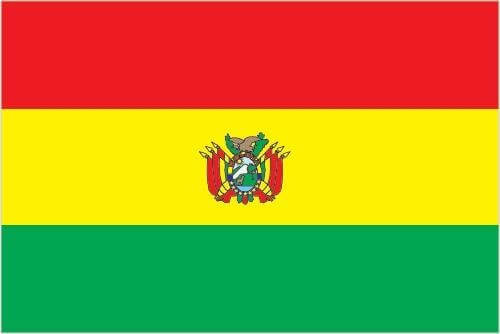
The Official flag of Bolivia
Cultural Geography of Bolivia
Largest Cities / Metro Areas
Ranked by population estimate (2023):
-
Santa Cruz de la Sierra (1,364,000): Santa Cruz is the largest city in Bolivia and the capital of the Santa Cruz Department. It is located in the country's eastern lowlands and is a major commercial and industrial center. The city's diverse population includes indigenous peoples, mestizos, and Europeans. The city has a warm, tropical climate and is known for its beautiful parks and gardens. Santa Cruz is also home to many museums, theaters, and other cultural attractions.
-
Cochabamba (900,000): Cochabamba is the capital of the Cochabamba Department. It is located in the country's central highlands at 2,570 m (8,429 ft). Cochabamba is a major agricultural center and is known for its delicious food. The city has a spring-like climate, with average temperatures ranging from 15 °C (59 °F) to 25 °C (77 °F). Cochabamba is known for its beautiful parks and gardens and is home to several museums, theaters, and other cultural attractions.
-
La Paz (812,000): La Paz is the administrative capital of Bolivia and is located in the Andes Mountains at an altitude of 3,640 m (11,942 ft). It is the third-highest capital city in the world, after Quito, Ecuador and Lhasa, China. La Paz is a vibrant and exciting city with a rich culture and history. The city has several museums, churches, and other cultural attractions. La Paz is also known for its delicious food and its friendly people.
-
Sucre (224,000): Sucre, also known as Chuquisaca, is the constitutional capital of Bolivia. It is located in the south-central part of the country, at an elevation of 2,810 m (9,220 ft). Sucre is a UNESCO World Heritage Site known for its beautiful colonial architecture. In addition, the city is home to several museums, churches, and other cultural attractions.
-
Oruro: (208,000): Oruro is a city located in the Oruro Department at an altitude of 3,709 m (12,169 ft), making it one of the highest cities in the world. It is an important mining center known for its annual Carnival celebration, one of the largest and most colorful in the world.
-
Tarija (159,000): Tarija is a city in southern Bolivia located in the Tarija Department. It is the department's capital and has a population of about 234,000. Tarija is a popular tourist destination known for its mild climate, delicious wine, and beautiful scenery. In addition, the city is home to several museums, churches, and other cultural attractions.
-
Potosí (141,000): Potosí is a city in southwestern Bolivia, located in the Potosí Department, of which it is the capital. Potosí is known for its silver mines, once the richest in the world. Potosí's silver mines eventually played out, but the city remains an important center for mining and industry. Potosí is a popular tourist destination known for its colonial architecture, rich history, and beautiful scenery.
-
Sacaba (107,000): Sacaba is a city in the Cochabamba Department of Bolivia. It is located in Valle Alto, a fertile valley located east of the city of Cochabamba. Sacaba is a major agricultural center producing fruits, vegetables, and flowers. The city is also a popular tourist destination known for its colonial architecture, beautiful scenery, and traditional festivals.
-
Montero (88,000): Montero is a city in the Santa Cruz Department of Bolivia. It is about 50 km (31 mi) north of Santa Cruz de la Sierra. Montero is a major agricultural center producing soybeans, cotton, corn, and rice. The city is also a popular tourist destination for its beautiful scenery, traditional festivals, and delicious food.
-
Quillacollo (87,000): Quillacollo is a city in the Cochabamba Department of Bolivia. It is located about 15 km (9 mi) south of Cochabamba. Quillacollo is a central religious center home to the Basilica of San Sebastián, one of Bolivia's most important pilgrimage sites. The city is known for its beautiful colonial architecture, delicious food, and lively festivals.
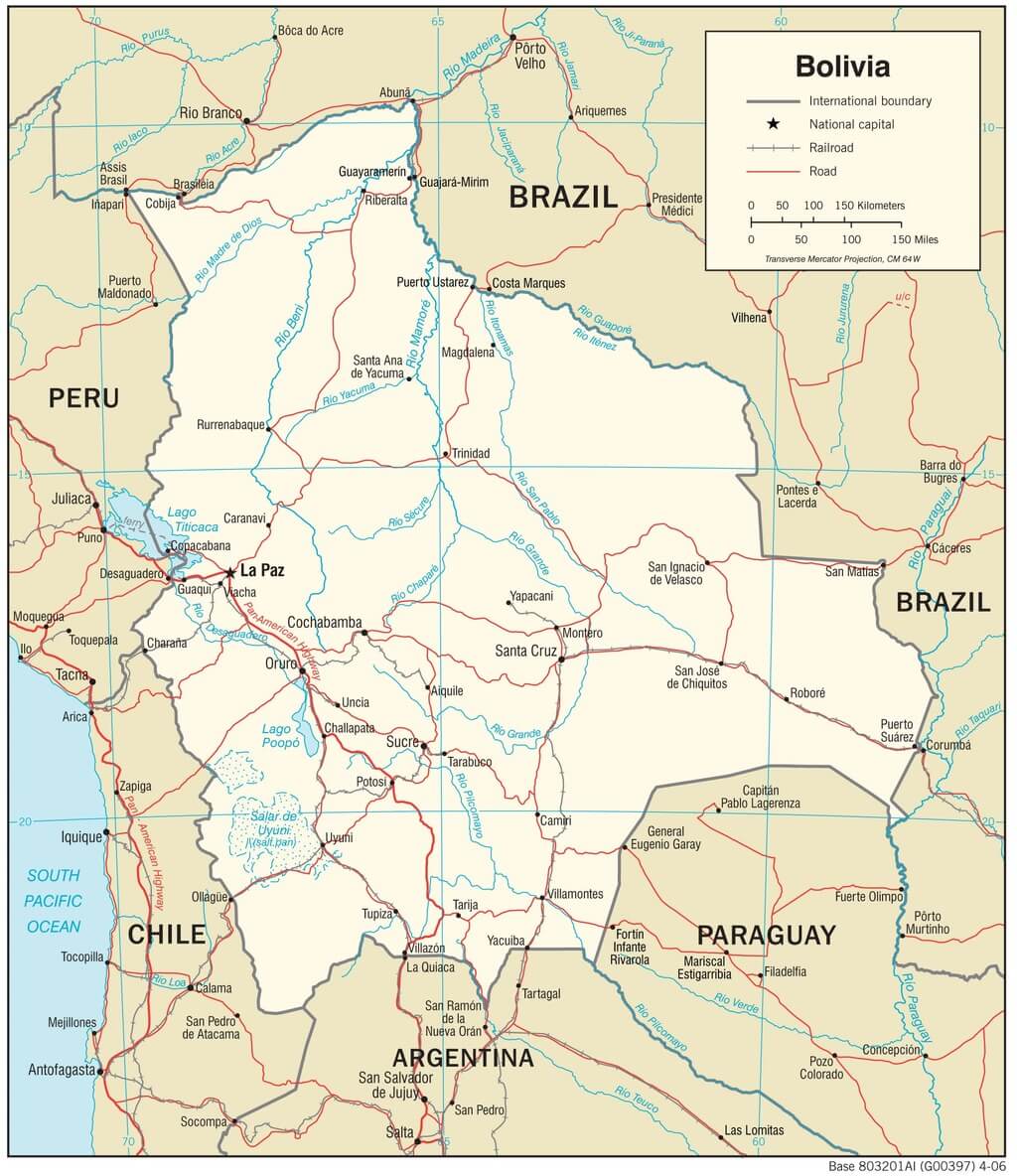
Bolivia transportation map
Administrative Divisions
Departments are Bolivia's primary political subdivisions. There are nine departments, each represented in the Senate by four Senators. Each department is divided into provinces, administered by sub-prefects appointed by the President. The provinces are further subdivided into sections or subprovinces, which are then subdivided into cantons. Bolivia is also divided into 327 municipalities and 1,384 cantons.
Departments
The departments of Bolivia, their capitals, and a brief description are as follows:
-
Chuquisaca (Capital: Sucre): Chuquisaca is known as the constitutional capital of Bolivia. It features colonial architecture and is a center of historical and cultural importance.
-
Cochabamba (Capital: Cochabamba): Cochabamba is often called the "City of Eternal Spring" due to its pleasant climate. It's an economic and cultural hub known for its vibrant festivals.
-
Beni (Capital: Trinidad): Beni is characterized by its extensive lowland plains and wetlands, making it an important agricultural region. It's also home to diverse wildlife.
-
La Paz (Administrative Capital: La Paz / Judicial Capital: Sucre): La Paz is Bolivia's administrative capital and political center. It's known for its dramatic altitude variation, bustling markets, and government buildings.
-
Oruro (Capital: Oruro): Oruro is famous for its annual Carnival of Oruro, a vibrant cultural celebration. It has a mining history and is surrounded by picturesque landscapes.
-
Pando (Capital: Cobija): Pando is the northernmost department, characterized by tropical rainforests and biodiversity. It's relatively sparsely populated.
-
Potosí (Capital: Potosí): Potosí is historically significant for its silver mining in colonial times. The city of Potosí features well-preserved colonial architecture.
-
Santa Cruz (Capital: Santa Cruz de la Sierra): Santa Cruz is the largest and most economically developed department. It has a tropical climate and is a hub for agribusiness and trade.
-
Tarija (Capital: Tarija): Tarija is known for its wine production, as well as its mild climate and beautiful landscapes. It has cultural influences from Spain and nearby countries.
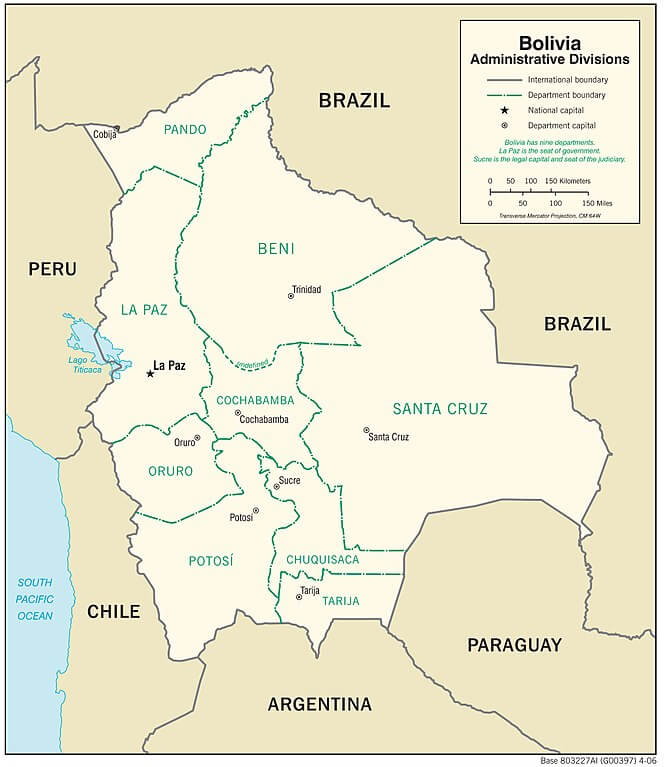
Map depicting the administrative divisions of Bolivia
Geographic Regions (Zones)
Bolivia can be broadly divided into three main geographic zones: the Andean Highlands, the Sub-Andean Valleys, and the eastern lowlands' Llanos (or plains). These zones are characterized by distinct topography, climate, and vegetation.
These three main geographic zones contribute to Bolivia's rich natural diversity and cultural heritage, making it a country of great geographic and ecological significance.
Andean Highlands (West)
This zone occupies the western part of Bolivia and is dominated by the Andes Mountains. It includes the Altiplano, a high plateau at an average elevation of around 3,500 m (11,500 ft). Towering peaks and volcanoes surround the Altiplano, including the famous Illimani and Sajama.
The region is known for its harsh, cold climate and sparse vegetation, but it also supports some high-altitude lakes, such as Lake Titicaca, the highest navigable lake in the world.
The Andean Highlands are culturally significant, home to indigenous populations and ancient archaeological sites.
Sub-Andean Valleys (South-Central)
Located between the Andes Mountains and the eastern lowlands, the Sub-Andean Valleys comprise a series of fertile valleys and deep canyons. These valleys benefit from the runoff of the Andean snowmelt and offer more moderate climates than the highlands.
The region is known for its agricultural production, including coffee, coca, citrus fruits, and various vegetables. The city of Cochabamba is situated in one of these valleys.
Llanos of the Eastern Lowlands (East)
This zone encompasses the vast lowland plains extending east of the Andes Mountains. The eastern lowlands include the Amazon Basin and the Gran Chaco region.
The Amazon Basin covers much of Bolivia's territory, characterized by dense rainforests, numerous rivers, and diverse wildlife. The Gran Chaco, located in southeastern Bolivia, is a drier region with scrubland and thorny vegetation.
The lowlands have a tropical climate with high temperatures and abundant rainfall, providing favorable agricultural conditions, including soybeans, corn, and cattle ranching.
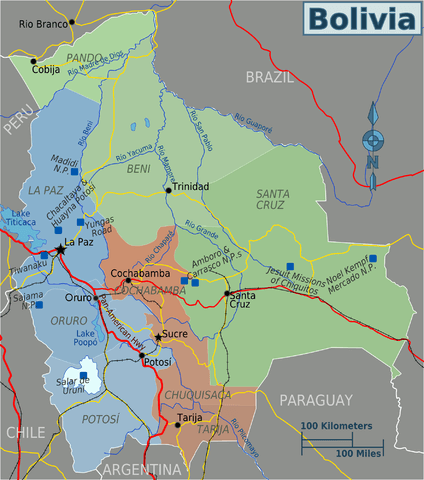
Map showing Bolivia's three geographic zones and their departments
Historical, Cultural, and Natural Landmarks
Bolivia's three main geographic zones offer many attractions and points of interest. Here are some of the main attractions in each zone:
West
-
Lake Titicaca: Located on the border between Bolivia and Peru, Lake Titicaca is the highest navigable lake in the world. It is renowned for its stunning blue waters, scenic landscapes, and the indigenous communities living on its shores, such as the Uros people and the Isla del Sol.
-
Tiwanaku: Tiwanaku is a pre-Columbian archaeological site in western Bolivia. It is located near the southern shores of Lake Titicaca on the Altiplano at an altitude of 3,850 m (12,630 ft). The main Tiwanaku site is a UNESCO World Heritage Site.
-
Salar de Uyuni: The world's largest salt flat, Salar de Uyuni, is a mesmerizing natural wonder. Its vast expanse of white salt crust creates a surreal and otherworldly landscape. Visitors can explore the salt flat, visit the Isla Incahuasi (a cactus-covered island), and witness breathtaking sunrises and sunsets.
-
Potosí: This historic city was once one of the richest in the world due to its silver mines. Potosí is known for its colonial architecture, including the Cerro Rico, a mountain famous for its mines. Visitors can take guided tours of the mines and learn about the city's mining history.
-
La Paz: Bolivia's capital city, located in the highlands, is known for its unique setting amidst steep hills and breathtaking views of the surrounding mountains. Visit the vibrant Witches' Market, explore the historic district, and ride on the world's highest urban cable car system.
-
Sajama National Park: Situated in the Oruro and La Paz departments, Sajama National Park is Bolivia's oldest national park and encompasses the majestic Sajama volcano, the highest peak in the country. The park is known for its high-altitude landscapes, including hot springs, geysers, and picturesque lagoons. It is also home to unique Andean wildlife, such as vicuñas, flamingos, and the rare Andean cat.
-
Lauca National Park: Lauca National Park extends into the Andean Highlands region on the border between Bolivia and Chile. The park features stunning high-altitude landscapes, including Chungará Lake, one of the world's highest lakes. Lauca National Park is known for its diverse wildlife, including llamas, alpacas, flamingos, and Andean condors.
-
Eduardo Avaroa Andean Fauna National Reserve: Situated in the Potosi and Oruro departments, the Eduardo Avaroa Reserve is known for its otherworldly landscapes, including colorful mineral-rich lakes, geysers, and the famous Uyuni Salt Flat. The reserve is home to unique wildlife, such as flamingos, vicuñas, and Andean foxes.
-
Cotapata National Park and Integrated Management Natural Area: Located near La Paz, Cotapata National Park protects many of the Yungas' cloud forests and high-altitude ecosystems. The park offers diverse flora, fauna, waterfalls, and scenic mountain landscapes. It is a popular destination for trekking, birdwatching, and exploring the cloud forest ecosystem.
South-Central
-
Cochabamba: Bolivia's third-largest city, Cochabamba, is in a picturesque valley surrounded by mountains. The city offers a blend of colonial architecture, bustling markets, and a vibrant cultural scene. The Cristo de la Concordia, a towering statue of Christ, provides panoramic views of the city.
-
Torotoro National Park: Located in the Potosí Department, Torotoro National Park is a natural and archaeological paradise. The park features stunning canyons, limestone formations, waterfalls, and ancient cave systems. It is also known for its dinosaur footprints and fossils. The park offers opportunities for hiking, caving, and paleontological exploration.
-
Chapare: The Chapare region is a lush tropical area known for its coffee plantations and coca fields. It offers opportunities for eco-tourism, including hiking, birdwatching, and visits to traditional indigenous communities.
-
Sucre: Bolivia's constitutional capital, Sucre, is a UNESCO World Heritage site renowned for its well-preserved colonial architecture. Explore its beautiful historic center, visit museums, and discover Bolivia's rich history and culture.
-
Carrasco National Park: Located in the Cochabamba and Santa Cruz departments, Carrasco National Park is one of Bolivia's largest and most biodiverse protected areas. It encompasses many ecosystems, including cloud forests, montane forests, and Andean grasslands. The park is home to abundant plant and animal species, including jaguars, spectacled bears, tapirs, and various bird species.
-
Amboró National Park: Situated in the Santa Cruz Department, Amboró National Park is known for its remarkable biodiversity and breathtaking landscapes. The park spans a range of altitudes, from the lowland Amazon rainforest to the montane forests of the eastern Andes. Amboró is home to numerous plant and animal species, including orchids, monkeys, jaguars, and a remarkable variety of birdlife.
-
Tunari National Park: Located near Cochabamba, Tunari National Park is known for its scenic beauty and ecological significance. The park encompasses a portion of the Andean Yungas and protects diverse ecosystems, from cloud forests to high-altitude grasslands. Tunari is home to unique flora and fauna, including Andean condors, mountain tapirs, and various bird species.
East
-
Rurrenabaque: This small town serves as a gateway to the Bolivian Amazon. From here, visitors can embark on wildlife tours and riverboat trips along the Beni and Tuichi rivers and explore the Madidi National Park, known for its rich biodiversity.
-
Santa Cruz de la Sierra: Bolivia's largest city, Santa Cruz de la Sierra, is in the eastern lowlands. It is a modern and cosmopolitan city with a lively atmosphere, shopping centers, and a diverse culinary scene. The city also acts as a starting point for excursions to the nearby Amboró National Park.
-
Jesuit Missions of the Chiquitos: These UNESCO World Heritage sites are a collection of six 18th-century Jesuit mission towns in the Chiquitos region. The missions showcase a fusion of European and indigenous architecture and art, and they are famous for their well-preserved churches and music festivals.
-
Madidi National Park: Located in the northern part of Bolivia's Amazon Basin, Madidi National Park is one of the most biodiverse areas on Earth. It covers vast rainforests, cloud forests, and high Andean grasslands. The park is home to an incredible array of plant and animal species, including jaguars, tapirs, macaws, monkeys, and many bird species.
-
Noel Kempff Mercado National Park: Situated in the northeastern part of Bolivia, Noel Kempff Mercado National Park is a UNESCO World Heritage Site. It encompasses various ecosystems, including Amazon rainforests, wetlands, savannas, and sandstone plateaus. The park is known for its stunning landscapes, unique geological formations, and rich biodiversity, including rare and endangered species like the giant otter and anteater.
-
Kaa-Iya del Gran Chaco National Park and Integrated Management Natural Area: Located in the Gran Chaco region of southeastern Bolivia, Kaa-Iya del Gran Chaco is the largest national park in Bolivia and South America. The park protects the unique Chaco ecosystem, which consists of dry forests, thorny shrublands, and vast grasslands. It is home to various wildlife species, including the elusive jaguar, pumas, tapirs, and numerous bird species.
-
Tariquia Flora and Fauna National Reserve: Situated in the southern part of Bolivia's Eastern Lowlands, Tariquia Reserve protects various ecosystems, including cloud forests, dry forests, and grasslands. The reserve is known for its diverse flora, including various orchids, and is home to wildlife such as spectacled bears, monkeys, and a wide array of bird species.
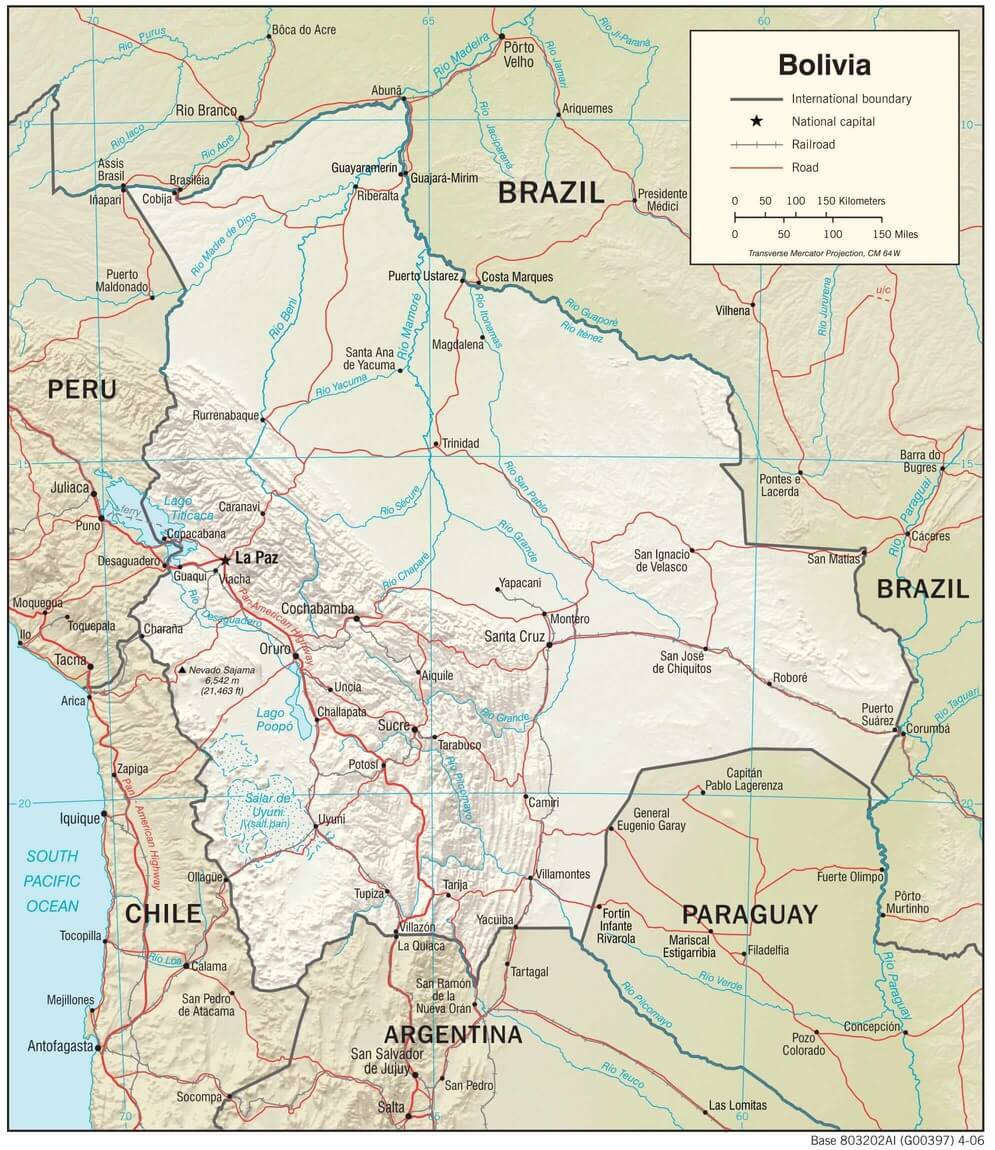
Bolivia physiographic map
